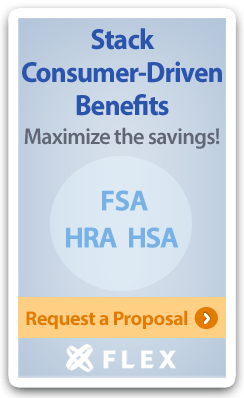Benefits Buzz
New HRA Rules Proposed for 2020

The Department of Labor (DoL), Department of Treasury (DoT) and the Department of Health and Human Services (HHS) have jointly proposed new rules that would impact Health Reimbursement Arrangements (HRAs) effective January 1, 2020.
The proposed rules, which are open for public comment until December 28, 2018, would make a significant change to the HRA integration requirements. Current regulations require HRA participants to also be covered by a traditional group health plan with limited exceptions. The proposed rules do not eliminate the integration requirement, but the rules would allow integration to also be available for employees covered by an individual health plan.
If the proposed rules are finalized, this would allow employers of all sizes to establish an HRA which reimburses individual health insurance premiums.
Some employers may shift from offering a traditional group health plan to offering an HRA which reimburses individual health insurance premiums, and the proposed rules make it clear that an employer cannot offer the same class of employees the choice between a traditional group health plan and an HRA which reimburses individual health insurance plans. However, an employer could offer a traditional group health plan to one class of employees (e.g. full -time employees) and an HRA which reimburses individual health insurance premiums to another class of employees (e.g. part-time employees).
Employers would be free to establish the maximum reimbursement limits under the HRA, but variances for employees could only be based on an employee’s age and/or family size. Variances would be allowed for these two factors because they have a significant impact on the cost of an individual health insurance plan.
A question that remains, and a question that is expected to be addressed with future guidance, is how an employer who is subject to the Employer Mandate (generally, those with 50 or more employees) can establish this type of HRA and avoid the risk of penalties. The Employer Mandate requires a health plan to be offered that is both affordable and has minimum value to avoid the risk of penalties. The proposed rules indicate that a future safe harbor rule will be issued and will tell employers how they can structure this type of HRA so that it can meet the affordability and minimum value requirements.
In addition to the above information, the proposed rules would also create a new limited, excepted benefit HRA. This HRA would be capped with an annual reimbursement limit of $1,800 with the carryover of unused funds permitted. The HRA could reimburse expenses for things like out-of-pocket dental and vision care, or premiums for short-term medical plans and COBRA. This type of HRA could be offered by employers who also offer a traditional group health plan.
This is all big news as indicated in a DoL press release. Preliminary estimates from the Treasury Department suggest that 800,000 employers are expected to offer HRAs which reimburse individual health insurance premiums for more than 10 million employees. We may be in for a significant shift in the way employee benefits are delivered.
Interested in an HRA for your company?

